Celebrating Black History Month: Inspiring Black Optical Scientists and Engineers

Valerie Thomas
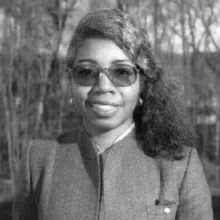
Valerie Thomas
NASA
Valerie Thomas, born in Baltimore, Maryland, graduated from high school in 1961 and excelled at Morgan State University, where she was one of two women majoring in physics. Graduating with highest honors in 1964, Thomas began her journey as a pioneer in STEM. Notably, she attended an exhibition in 1976 that featured an illusion of a light bulb appearing lit even when removed from its socket, sparking her innovative spirit. This led to her groundbreaking work, resulting in the patent for the illusion transmitter in 1980, a technology still utilized by NASA and beyond. Even in retirement, she continues to mentor youth, leaving an indelible mark on the next generation of scientists and engineers.
Read more about Valerie Thomas
Dr. Emmett Chappelle
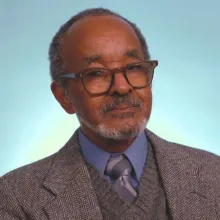
Emmett W. Chappelle
National Inventors Hall of Fame
Dr. Emmett Chappelle, born in October 1925 in Phoenix, AZ, embarked on a remarkable journey in the realm of science. From his early education to his pioneering work at the Research Institute for Advanced Studies, Chappelle's focused his work on ensuring safe, breathable air for astronauts. Notably, his invention of the ATP fluorescent assay provided a path forward for how we might detect life on other planets like Mars by studying extraterrestrial soils for microbial life. His dedication to scientific inquiry serves as an inspiration, highlighting the importance of innovation in advancing our understanding of the cosmos.
Read more about Dr. Emmett Chappelle
Dr. Edward Bouchet

Dr. Edward Bouchet
APSNews
Dr. Edward Bouchet, a trailblazer in the field of physics, shattered barriers as the first Black American to earn a physics PhD. Bouchet was not the first black student to enter Yale, but he was the first to graduate. In June 1874, he graduated sixth in a class of 124 students. He was also the first black person to be nominated to Phi Beta Kappa. After obtaining his physics degree Bouchet continued his graduate education and spent two more years at Yale, completing further studies in chemistry, mineralogy, and physics. Just two years after completing undergraduate studies, Bouchet became the first black person to earn a PhD in physics. Bouchet's groundbreaking achievements paved the way for future generations of scientists, emphasizing the transformative power of education and mentorship.
Read more about Dr. Edward Bouchet
Dr. Patricia Bath
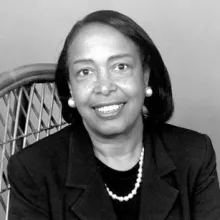
Dr. Patricia Bath
Changing the Face of Medicine
Dr. Patricia Bath, a pioneer in ophthalmology and laser science, dedicated her life to combating blindness and advancing medical innovation. Her invention of the laserphaco probe revolutionized cataract surgery, transforming countless lives worldwide. Beyond her groundbreaking research, Dr. Bath's commitment to humanitarian efforts, restoring sight to those in need, embodies the true essence of compassionate leadership and scientific excellence. Her "personal best moment" occurred on a humanitarian mission to North Africa, when she restored the sight of a woman who had been blind for thirty years by implanting a keratoprosthesis. "The ability to restore sight is the ultimate reward," she said.
Read more about Dr. Patricia Bath
Dr. Shirley Jackson
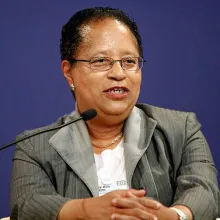
Dr. Shirley Jackson
World Economic Forum
Dr. Shirley Jackson, a trailblazing theoretical physicist and accomplished academic leader, has left an indelible mark on the scientific community. From her groundbreaking research to her historic presidency at Rensselaer Polytechnic Institute, Jackson's contributions have reshaped academia and scientific policy. In her professional career, while working at AT&T, Bell Laboratories and Rutgers University, she prepared or collaborated on over 100 scientific articles. In 2016, President Barack Obama awarded Dr. Shirley Jackson the National Medal of Science, the highest honor to individuals who made contributions to scientific fields. This recognition underscores her enduring legacy as a role model for women and minorities in STEM fields.
Read more about Dr. Shirley Jackson
Lonnie Johnson
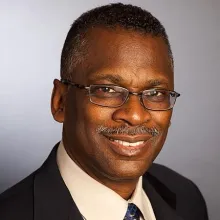
Lonnie Johnson
National Inventors Hall of Fame
Lonnie Johnson, an engineer and entrepreneur, epitomizes innovation with his invention of the iconic Super Soaker. In 1989, Johnson formed his own engineering firm and licensed the most famous invention. The Super Soaker, to Larami Corp. Two years later, the Super Soaker generated over $200 Million in sales and became the No. 1 selling toy in America. Beyond the realm of toys, Johnson's groundbreaking work in energy technology and rechargeable battery technology underscores his commitment to sustainability and technological advancement. Trained as a nuclear engineer, Johnson worked as a research engineer at Oak Ridge National Laboratory, then joined the US Air Force, heading the Space Nuclear Power Safety Section at the Air Force Weapons Laboratory. In 1979, he left the Air Force to become a systems engineer at NASA’s Jet Propulsion Laboratory (JPL) to work on the Galileo Mission.
Read more about Lonnie Johnson
Dr. Mae Jemison
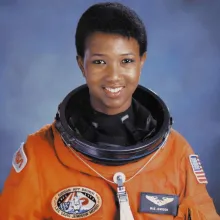
Dr. Mae Jemison
National Air and Space Museum
Dr. Mae Jemison, the first Black woman in space, has blazed trails in both science and exploration. Her journey from Stanford University to NASA exemplifies resilience and determination in the face of adversity. During her journey, Jemison studied nuclear magnetic resonance spectroscopy, reproductive biology, and hepatitis B and rabies vaccines. In the wake of the space shuttle Challenger tragedy, Jemison left her private medical practice in Los Angeles and applied to become an astronaut candidate. She completed the intensive training, being assigned to STS-47. Jemison's groundbreaking space mission and subsequent contributions to education and technology inspire future generations to reach for the stars, emphasizing the importance of diversity and inclusion in STEM fields.
Read more about Dr. Mae Jemison
Dr. Ronald McNair

Dr. Ronald McNair
University of Washington
Dr. Ronald McNair, a brilliant physicist and space shuttle astronaut, defied the odds to achieve his dreams. From humble beginnings in South Carolina to the stars above, McNair's journey exemplifies perseverance and courage in the pursuit of knowledge. Ronald McNair was nationally recognized for his work in laser physics and was one of the thirty-five applicants selected by NASA from a pool of ten thousand in 1984. McNair became the second Black American to make a flight into space. He was a mission specialist on the space shuttle Challenger, the same mission that exploded nine miles over the Atlantic shortly after take off from the Kennedy Space Center in Florida on January 18, 1986. His legacy lives on through initiatives like the McNair Post-Baccalaureate Achievement program, ensuring that his pioneering spirit continues to inspire generations of aspiring scientists and scholars.
Read more about Dr. Ronald McNair
Find out more about each of these inspiring people by following the Wyant College of Optical Sciences Instagram page, where a brief bio on each person was posted throughout the month of February in celebration of Black History Month.
